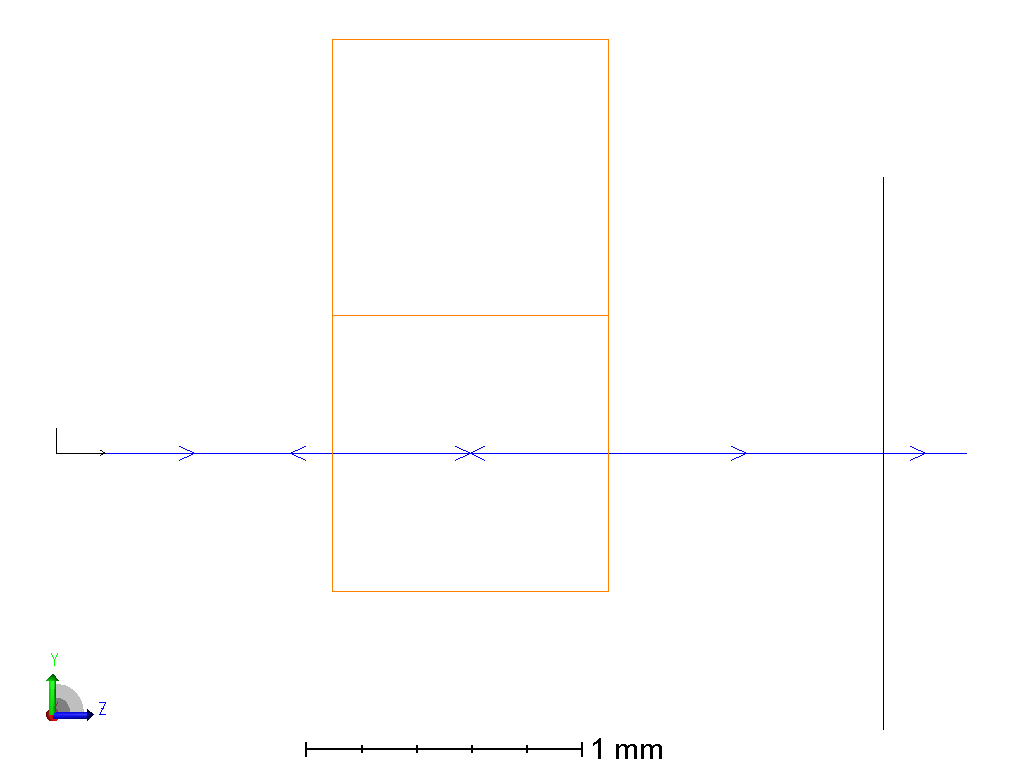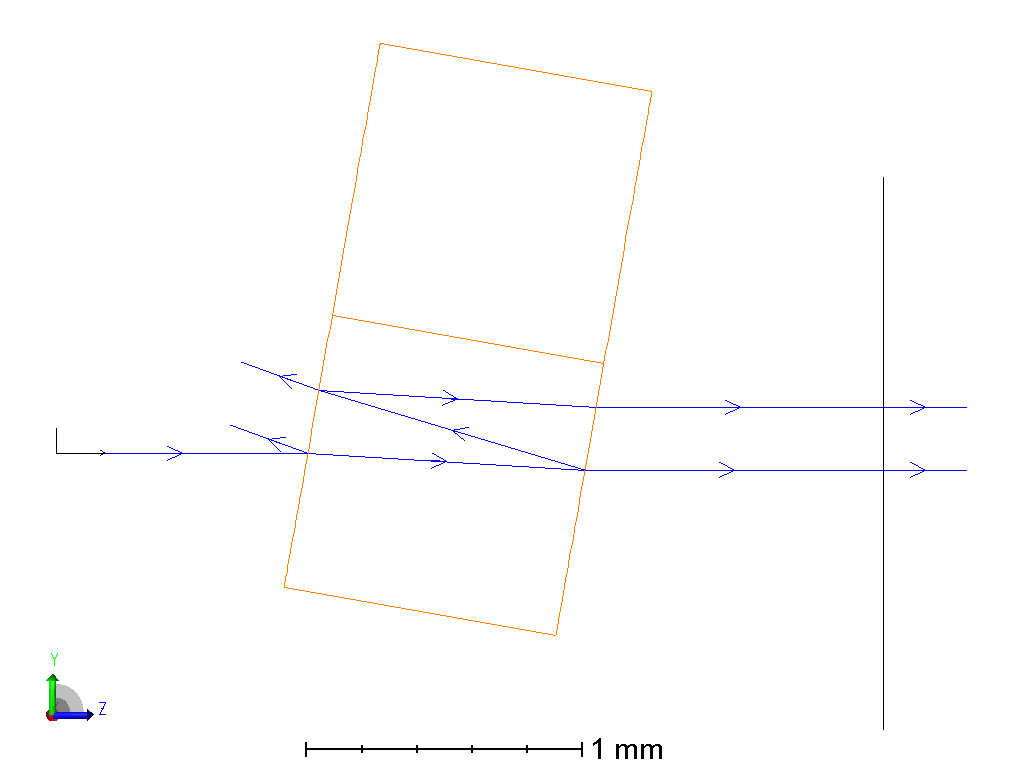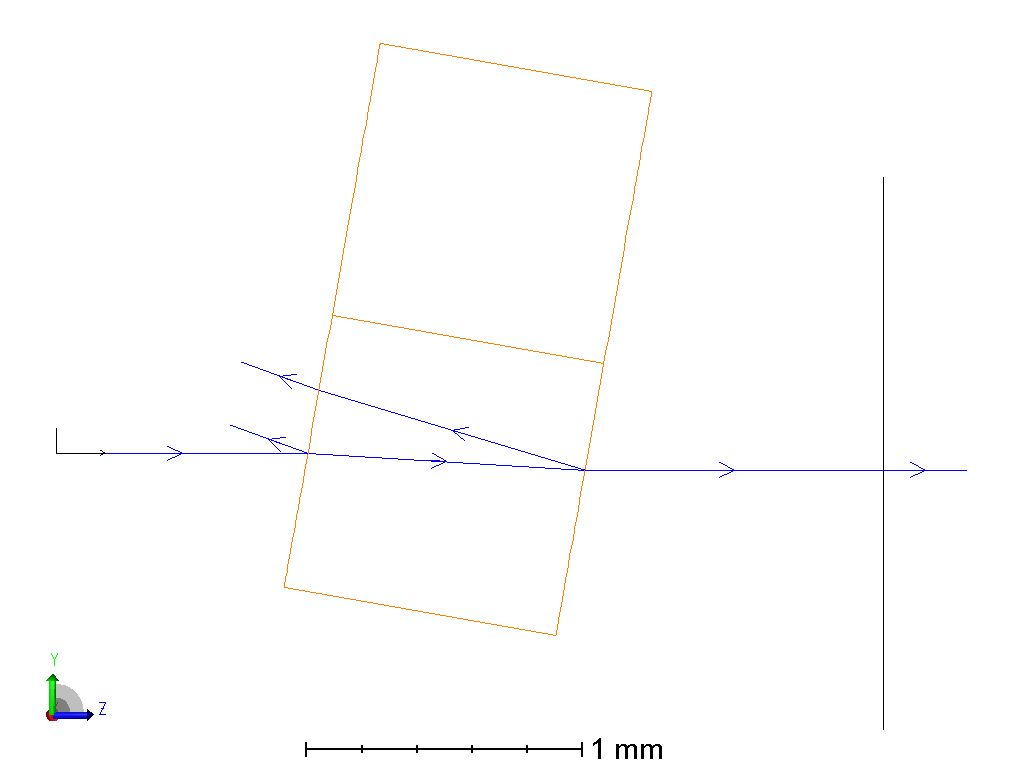For modeling the transmission of a system I put sensor at the input and another sensor at the output, but I get a transmission which is not compatible with measurement values (it is much lower). For understanding what is go on, I build the following configuration: One ray as source, which incide in a BK7 cilinder at zero degrees, and put the detectors before and after the BK7, the first detector records the 100W of the input, but the second record 91.7W , getting 91.7% instead the 96% I expected. Indeed, at 'Coating-Transmsision vs angle ' I see that the transmisison for the BK7 is 0.957 at zero degree ( I used 590nm wavlength). But at the original model I need the overall transmssion integrated over all angles. What I made wrong with the detectors? There is it a more efficient form to establish the transmission of the system than my detectors aproach?
System transmission using detectors in non sequential mode
Enter your E-mail address. We'll send you an e-mail with instructions to reset your password.






